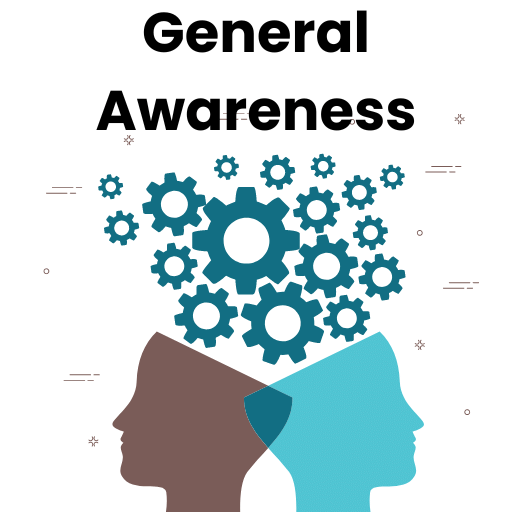Best Study Material for SSC CGL Exam
SSC CGL Exam > SSC CGL Notes > SSC CGL Tier 2 - Study Material, Online Tests, Previous Year > Price & Inflation
Price & Inflation | SSC CGL Tier 2 - Study Material, Online Tests, Previous Year PDF Download
| 1 Crore+ students have signed up on EduRev. Have you? Download the App |
Prices
- A major objective of economic planning in India has been of price stability—a necessary condition for stability in economic life as well as economic growth.
- Fluctuating prices create an environment of uncertainty which is not conducive for development.
- Persistent and appreciable rise in prices lead to redistribution of national income and wealth to the disadvantage of the poor and working classes which eventually influences the demand pattern.
- Also producers, in a market economy, decide about their production depending on the demand for their production.
- Thus changes in prices ultimately influence the production.
- Continuous rise in prices adversely affects investment activities also as investment planning is done in money terms and when prices rise continuously the whole planning is disrupted.
- Prices have been continuously rising in India since mid-fifties; though the rate of rise has not been same throughout the period.
- Sometimes rate of price rise has been marginal and sometimes it has become alarmingly high.
- But when the rate has become alarmingly high it has had serious repercussions on the economy as a whole.
- India has been passing through this phase of high rate of inflation almost for three decades now beginning from early seventies.
Inflation
- A persistent rise in general level of prices is known as inflation. It is usually measured as rate per cent per unit time, say, a year or a month.
- Inflation occurs when currency of a country exceeds the production.
- Existence and availability of surplus currency raises the general price level and lowers the purchasing power of the currency.
- So inflation results in the depreciation in the value of money.
- The two alarming features of inflation are:
- acceleration in the rate of inflation over time, and
- high rate of unemployment in the face of high rate of inflation—also termed as stagflation and slumpfation—which has posed serious challenge.
- Inflation, based on degrees of severity, is classified into various types.
- The initial stage of inflation is generally slow and this is actually an ideal time to check it. Such an inflation with a slow rate of price rise (a low single digit inflation rate) is called crawling or creeping inflation.
- Such an inflation may not be considered undesirable particularly when it is after depression.
- In the course of time, the process gathers strength and it enters the intermediate stage.
- In its earlier part it may be called trotting or walking inflation.
- Apart from the speed of the price increase, there is an increase in the effective demand, rate of investments and money income.
- Trotting inflation may soon assume the shape of running inflation.
- The output of the economy fails to respond to the quick rise of money income and aggregate demand.
- Along with the greater rise due to the expectation of higher rise still, there is a tendency of hoarding and stock piling by the business community.
- It curtails the available output in the market, so the price level is pushed further. Running inflation now becomes galloping inflation (inflation rises at double or triple digit rates).
- The authorities are forced to meet their deficits by resorting to deficit financing.
- The last stage is the run away inflation known as hyper inflation (prices rise at a thousand million or trillion percent annually).
- It is the last stage of inflation.
- At this stage, the speed of the general rise in the price level becomes extremely high. Planning goes out of context in such a peculiar situation. It leads to the collapse of the monetary and financial structure.
Causes of Inflation
Inflation in India is generally caused by three factors:
- those which induce an increase in demand—called demand pull inflation;
- those which produce a decrease in supply—called cost push inflation; and structural rigidities.
Factors on Demand Side
- Increase in Money Supply — Increased liquidity is needed to finance the expanding volume of transactions in the economy and hence is a necessary condition of growth. But when liquidity increased at a rate faster than one desired by increasing transactions, it leads to inflation. In India, the supply of money has been increasing continuously. Though it has been mainly used for monetising the transactions, a large part of it has proven inflationary.
- Increase in Public Expenditure — Pubic expenditure in India has risen steadily. Though some increase in public expenditure is inevitable but the way it has increased in expenditure raises the productive capacity of economy and thus contributes to an increase in national product.
The expenditure by government of non-development services, by putting income and purchasing power into hands of its employees, creates demand for goods and services without any corresponding increase in the supply.
This creates an imbalance and thus leads to inflation. In India 43 percent of govbernment expenditure is on non-.developmental activities.
It is now believed that reckless increase in government expenditure, particularly on account of large interest payments and various types of unwarranted subsidies has led to large budget deficit and consequently to inflationary pressures. - Deficit Financing — When government is unable to raise adequate revenue for its expenditure it resorts to borrowing of funds from banking system for meeting its deficit. This technique of resource mobilisation is called deficit financing.
Deficit financing in India has been resorted to on a large scale to meet the increasing government expenditure.The amount of deficit financing which the government has actually done in the past has led to inflationary pressures. - Foreign Exchange Reserves — Large foreign exchange reserves of India particularly due to large foreign inward remittances as a result of large scale employment of workers in gulf countries, special schemes and facilities extended to NRIs coupled with other supporting circumstances like earnings on account of invisibles, expansion in money supply and decline in national income has resulted into inflation.
Factors on Supply Side
- Rise in Administered Prices — The price level of a number of commodities, mostly produced in public sector, are administrated by the government.
The government has been frequently raising the prices in order to cover up losses in the public sector which often arises due to low productivity, inefficiency and defective management.
The government should in fact, reduce costs by improving the efficiency.
But as this requires lot of efforts, the government finds it easy to raise the administered prices. This results in cost-push inflation.
Recently government has increased administered prices of petrol, petroleum products, steel and iron, electricity and fertilisers at regular intervals.
Although according to government these were necessary but they have caused inflationary pressures. - Erratic Agricultural Growth — There has been considerable development in agricultural sector in India and as a result foodgrains output has increased at a rate 2.9 percent per annum — distinctly higher than the rate of population growth.
As the Indian agriculture is mainly dependent on monsoon, therefore crop failures due to droughts have been a regular feature in this country. - Scarcity of foodgrains in these particular years, has not only resulted in increase in food prices but also in general price level. Industrial workers, under pressure
of rising prices of foodgrains force their employers to increase their wages consequently leading to rise in prices of industrial goods also during the period of low agriculture production. - Agricultural Price Policy — In order to provide incentives to farmers to increase agricultural production, the government has been pursuing a policy of price support for about three decades.
By announcing procurement prices for agricultural products the government not only ensures certain minimum prices to the farmers but also eliminates the risk element involved in farming operations. This policy has particularly benefited big and large farmers in India.
They use all the unscrupulous methods, including hoarding, for raising market prices and hence pressurise the government to raise support prices.
This activity has contributed to inflationary pressures in the country. - Inadequate Industrial Growth — Industrial growth in our country has been much below than what we had targeted for.
Our industrial structure, developed on the basis of heavy industry led growth, is not equipped well to meet the rising demand for consumer goods.
A large expansion of money which has created big demand for essential goods, without any corresponding increase in their production, has pushed up their prices. - Defective Management — A large part of the distribution machinery in India is in the private sector.
The private entrepreneurs in their zeal for higher profits indulge in such malpractices such as hoarding, speculative dealings, benami transactions, black marketing etc.
Even though these practices are not irrational or immoral according to the ethics of capitalism they do harm the interests of the society. These practices only lead to artificial scarcities pushing up the price levels as a result.
The working of PDS has also been marred by inefficient and corrupt administration. All these factors have led to falling productivity and consequent rising costs of production.
Structural Rigidities
- Among structural rigidities the most important factor that lead to rise in prices is the inelasticity of supply.
- It means that supply of goods and services does not expand and its composition does not adjust sufficiently fast to meet not only rising demand but also changed in pattern of demand without serious price pressures.
- Other structural elements that lead to rise in price level are :
- high degree of concentration of ownership of land and inefficient land tenure systems;
- lack of incentives for increasing agricultural production;
- export instability, unfavourable terms of trade and low capacity to import; and
- inequalities in wealth and income distribution.
Consequences
- Mild inflation is good for economy. It creates favourable climate for investment which eventually results in larger income and full employment.
- However, high rate of inflation has serious repercussions on the economy as a whole.
- Besides what is worse still it affects the various classes in different ways.
- Persons' income like the interest and rent receivers are the worst sufferers.
- As the interest receivers are mostly rich with plenty of loanable funds and have other avenues of income as well, in real practice they may not suffer so much.
- Inflation has an extremely adverse effect on savings of the middle, lower middle and the poor classes.
- Long term savings are also discouraged. Creditors still suffer in another manner.
- As the purchasing power of the money is constantly declining their loan amount when repaid can be much less in terms of goods and services. Debtors are thus gainers too.
- When they liquidate their loans in terms of its purchasing power, they are returning a far smaller proportion.
- Wage earners are the worst sufferers. Initially the wages do not rise and when they do rise they still lag behind prices.
- Business community is generally a gainer for while the prices of its costs of production either remains the same or rises at a slower pace, certain elements of costs do not rise at all like the rent and interest.
- Such an arbitrary redistribution of wealth from the working and the poorer classes to the richer classes has been sharply criticised.
- Although inflation is a worldwide phenomena, prices in India have risen more sharply than that in most of the other countries.
- This has adversely affected our balance of payments in two ways :
- the demand for Indian products in international market has declined and so increasing of our exports has become difficult. Also as the profitability in the home markets have increased, producers are least interested in stepping up exports; and
- as the foreign goods appear cheaper, Indian importers have tried to increase imports.
Remedies
- In underdeveloped countries like India the best way to stabilise the general price level is to restrict the supply of money.
- This is because money supply being an important determinant of money incomes in these countries, the aggregate demand can be restricted to a great extent by reducing supply of money.
- However, the government in India has not paid much attention to this fact.
The document Price & Inflation | SSC CGL Tier 2 - Study Material, Online Tests, Previous Year is a part of the SSC CGL Course SSC CGL Tier 2 - Study Material, Online Tests, Previous Year.
All you need of SSC CGL at this link: SSC CGL
|
1363 videos|1310 docs|1010 tests
|
FAQs on Price & Inflation - SSC CGL Tier 2 - Study Material, Online Tests, Previous Year
| 1. What is the relationship between price and inflation? |  |
| 2. How does inflation impact consumer purchasing power? |  |
Ans. Inflation erodes the purchasing power of consumers. As prices rise, the same amount of money can buy fewer goods and services. This means that consumers have to spend more to purchase the same items they used to buy for less. Therefore, inflation reduces the value of money and diminishes consumer purchasing power.
| 3. What causes inflation in an economy? |  |
Ans. Inflation can be caused by various factors. Some common causes include an increase in the cost of production, such as higher wages or raw material prices. Inflation can also be fueled by excessive money supply in the economy, as more money chases the same amount of goods. Additionally, inflation can be influenced by external factors like changes in exchange rates or global commodity prices.
| 4. How does the government control inflation? |  |
Ans. Governments use various tools to control inflation. One common measure is monetary policy, where the central bank adjusts interest rates to regulate the money supply in the economy. By increasing interest rates, the central bank reduces borrowing and spending, which helps to decrease inflation. Additionally, the government may implement fiscal policies such as increasing taxes or reducing government spending to control inflation.
| 5. What are the effects of high inflation on the economy? |  |
Ans. High inflation can have several negative effects on an economy. It erodes the value of money, reducing purchasing power and making it more expensive to borrow. It can also create uncertainty and instability, as businesses and individuals struggle to plan for the future. High inflation can lead to decreased investment and economic growth, as it becomes difficult to make long-term financial decisions in a volatile environment.
|
1363 videos|1310 docs|1010 tests
|
Download as PDF

|
Explore Courses for SSC CGL exam
|

|
Signup for Free!
Signup to see your scores go up within 7 days! Learn & Practice with 1000+ FREE Notes, Videos & Tests.
Related Searches


















